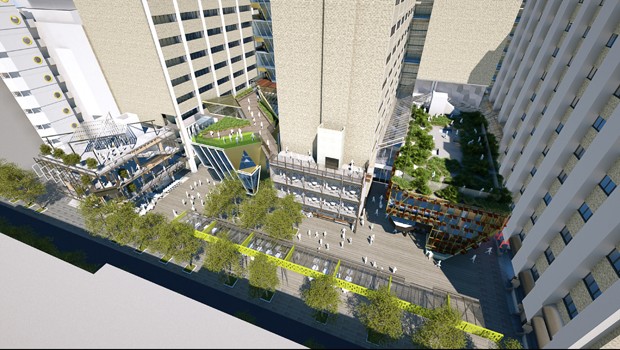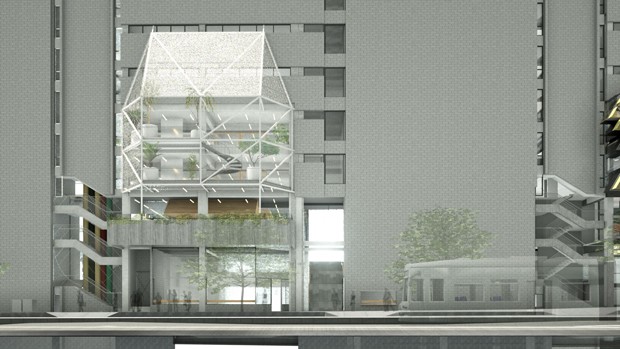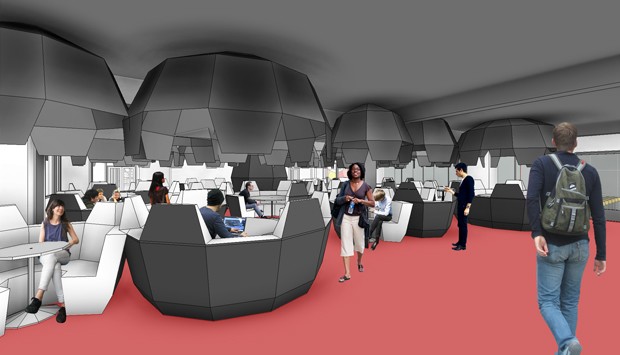Lyons Architecture is set to transform the heart of RMIT University’s central Melbourne campus in collaboration with Minifie Van Schaik, NMBW Architects, Harrison White, Maddison Architects and Taylor Cullity Lethlean.
The New Academic Street (NAS) project is a combination of new construction and refurbishment of four 1970s buildings along Swanston Street – buildings 8, 10, 12 and 14, which are experiencing traffic bottlenecks, a growing demand on lifts, and narrow entrances at street level.
Aiming to enliven and reinvent the core of the university’s city campus, it is hoped that the existing spaces will be able to match the vibrancy of some of the newer spaces, such as the Swanston Academic Building.
The centre of the campus will be opened up with outdoor terraces, laneways and light wells, with the lower levels (2, 3, 4 and parts of 5 and 6) across the buildings better linked. The campus will also be reconnected with the city and streetscape.


One of the major works planned is the expansion of Swanston Library, which attracts almost 10,000 students every day. The library will be refurbished to provide approximately 40 to 50 per cent more quiet and collaborative study spaces, including light-filled areas looking on to Bowen Street.
A service delivery model will see library staff available to help users navigate the collection and facilities as efficiently as possible, with Lyons director Cary Lyon noting that the new environment will be very different to the traditional library set up.

Students arriving on campus will be able to converge on the new level 4 Student Hall and connect with services directly or via a single step referral to a specialist provider.
An outdoor multi-storey Garden building at the end of building 10 will transform the Bowen Street environs, creating an urban oasis, while level 4 of building 14 will incorporate a new retail precinct with a variety of commercial, recreation and food facilities, as well as a licensed bar.

The NAS project will begin in mid-2015, and be completed in stages from 2015-2017. The first phase is a series of works and upgrades to ready the campus for the main construction phase, which is achieved by upgrading facilities within the current RMIT property footprint.

